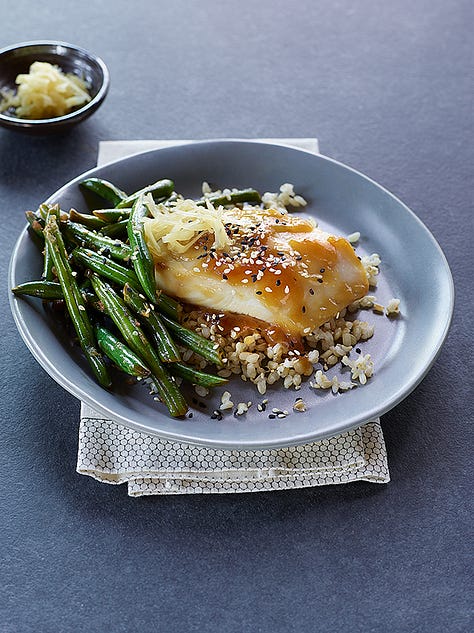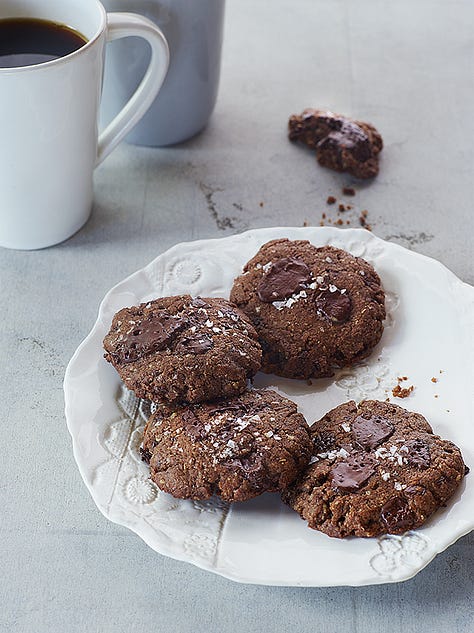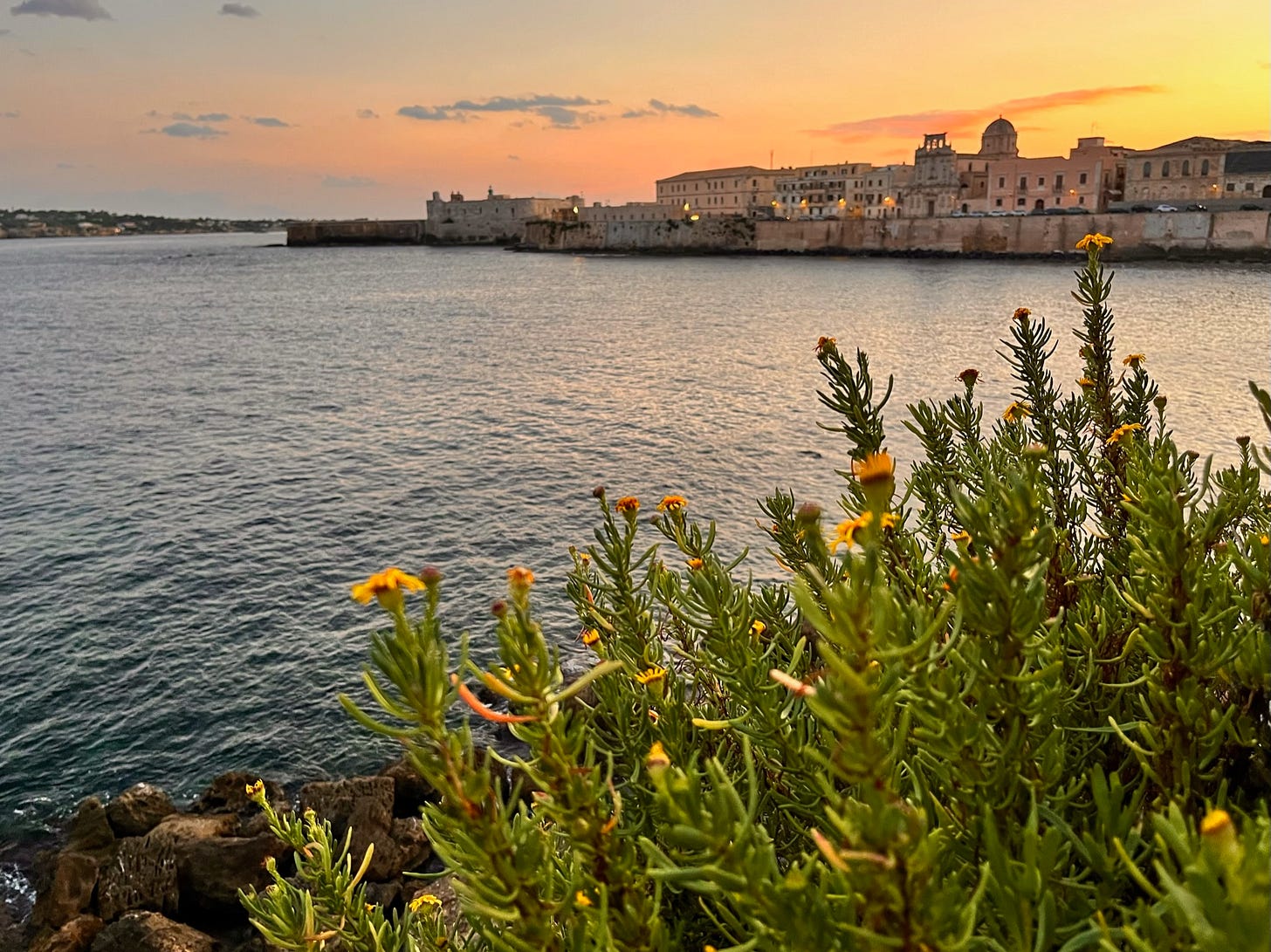These 4 Things Make Brain Healthy Eating So Much Simpler
Plus, what to know about flavonoids, and the first BHK cookbook club menu
Hello everyone! Before we get into the 4F’s and flavonoids, I have a few announcements. First, I am excited to launch the BHK cookbook club—a way for us to cook together, share photos, and learn more about brain health. While the book is organized by brain-healthy food groups, our menus will follow the seasons. For February, I’ve come up with a menu that’s both comforting and streamlined. And, since Valentine’s Day happens this month, there will be chocolate.
Read about how the cookbook club works HERE.
Secondly, I just announced the next Brain Health Retreat in Sicily, and I would love for some of you to join me. This 6-day culinary adventure is a deep dive into the Mediterranean lifestyle through the lens of brain health, curated by Italian food expert Elizabeth Minchilli. For more information, use this button to contact Elizabeth directly.
Now, let’s talk about the 4F’s of brain healthy food. While writing my book, I grappled with the question of what, exactly, makes a food brain healthy? It’s not always easy to know. I’m sure you’d recognize foods like blueberries, walnuts, salmon, and kale as unequivocal brain-boosting superstars. But, most foods fall somewhere on a spectrum of neuroprotective properties. I wanted to give you a simple rubric to help you choose the best food for your brain.
Then, just before the final manuscript was due, I came up with a simple checklist: the 4F’s of Brain-Healthy Food. Each of the 4F’s—fats, fiber, flavonoids, and fit— provide something your brain needs to thrive. And while there are surely exceptions to this rule (I haven’t come up with one, but maybe you will), a brain-healthy food will possess at least 2 of these four properties. If you remember the 4F’s, you’ll be able to cut through the noise and pick a food that’s good for your brain, every time.
THE FOUR 4FS OF BRAIN HEALTHY FOOD
Brain-friendly fats, for example, are the types of fat in food that are not only anti-inflammatory, they provide structure to repair brain cells as they age.
Fiber slows down the absorption of sugar and provides food for brain-boosting microbes.
Flavonoids are the brain health nutrients in food that combat oxidative stress.
Fit—that’s how you make all these foods work with your lifestyle. I’ll cover all of these in greater detail in upcoming posts.
Today, let’s dive deeper into flavonoids, and recent papers linking their presence in the diet to better cognitive function and a reduced risk of Alzheimer’s. We’ll look at the others in future posts.
Flavonoids: Those pretty colors are actually brain health nutrients
You’ve probably heard the advice: eat the rainbow. When it comes to eating for brain health, this is especially true. That’s because the naturally occurring colors in foods are a sign of flavonoids, plant pigments that are especially crucial for brain health.
Some of the most exciting studies published in the last few years have shown that an abundance of flavonoid-rich foods in the diet can help reduce the risk of Alzheimer’s. While more than 5,000 different flavonoids have been described, the health-promoting ones fall into these five subclasses: flavonols, flavones, flavanones, flavan-3-ols, and anthocyanidins.
These colorful plant compounds protect the brain through a myriad of mechanisms. Some help prevent early brain cell death (as is seen with aging and Alzheimer’s) by railroading inflammatory particles. Others specifically block the formation of amyloid protein, a pathologic feature of Alzheimer’s. Certain flavonoids (like the anthocyanins in berries) have been proven to improve memory in human studies by: increasing brain derived neurotrophic factor (BDNF, a substance brain cells news to thrive); enhancing the strength of synapses; and keeping blood vessels healthy to ensure adequate cerebral blood flow.
When researchers at Rush University studied dietary patterns and Alzheimer’s, these flavonols stood out: isorhamnetin, kaempferol, and myricetin. Study participants who ate an abundance of foods that included these particular flavonols had between 38% and 50% fewer cases of Alzheimer’s after 4.5 years. The top flavonoid foods in this study were kale, beans, green tea, spinach, broccoli, apples, oranges, pears, tomatoes, pears, olive oil, and wine.
In 2022, Dr. Tom Holland and his group at Rush University showed that this same flavonol-rich diet was strongly linked to better performance on cognitive tasks. Eating this way was associated with a brain more able to maintain these abilities with age:
semantic memory—the ability to retrieve words from long term memory
working memory—the ability to keep in mind a small amount of information used in the execution of cognitive tasks, like remembering an address while listening to directions on how to get there
visuospatial ability—the capacity to identify visual and spatial relationships among objects, like understanding the differences and similarities between objects
perceptual speed—the ability to quickly and accurately compare similarities and differences among sets of letters, numbers, objects, pictures, or patterns
Learn more in this Instagram Live with Dr. Tom Holland where we discuss his Alzheimer’s prevention research.
Choosing flavonoid-rich foods
Eat a wide variety of the most vibrantly colored vegetables and fruits. If you normally cook with yellow onions, for example, try using red onions (one of the richest sources of quercetin). Go for deep colors. The darker the berry—whether purple, blue, black, or red—the more anthocyanins it contains. The darker the green in leafy green vegetables (think arugula, kale, and watercress), the more brain-boosting nutrients they provide.
Besides vegetables and fruits, you can get flavonoids from whole grains, such as quinoa and oats, and dark or colorful legumes, like black beans and red lentils.
BHK Cookbook Club February Menu
This month, let cook up some comfort the brain-healthy way. Since it’s still soup season, we’ll start with this hearty mushroom soup featuring chestnuts, both toasted and sprinkled on top and blended into the creamy base. Next, miso-glazed cod checks off many brain healthy food group boxes, while being so easy and packed with flavor. To finish, a chocolate chip cookie (or two) really satisfies. This one’s made with whole grain flour, extra-virgin olive oil, and one of my favorite swaps for butter—tahini.



Chestnut and Mushroom Soup
Miso-Glazed Cod with Rice and Gingery Green Beans
Whole Grain Chocolate Chip Cookies
Recipe Notes:
Look for already roasted and peeled chestnuts in foil packets or cans online or at the grocery store. If you can’t find them, use raw cashews instead.
BHK readers tell me they’ve had great success swapping in salmon and halibut in the Miso-Glazed Cod. Keep an eye on the cooking time, though, to avoid overcooking.
The Whole Grain Chocolate Chip Cookies are a favorite at my house. For the best results, make sure to underbake them slightly (you’ll find detailed instructions in the recipe.)
Book Tour News




I write to you from Santa Rosa, California, at the gateway to the Sonoma wine country, where I was at Copperfield’s Bookstore in conversation with my friend Katie Morford: a trusted registered dietician, cookbook author, and one of my favorite food writers. In case you are wondering what an RD and a brain food doctor/chef order in a restaurant, we snapped a few pics for you!
Tomorrow I’ll be at Book Passage in Corte Madera, CA in coversation with my friend Dr. Jeanne Rosner of Soul Food Salon at 4 pm PST. Join us! Check out this link to see where else I’ll be while on book tour in California.
Brain Health Retreats
I’m looking forward to being with some of you on upcoming brain health retreats.
There are currently 4 spots left in the Brain Health Retreat in Panama from March 26 to April 1, 2023. More details HERE.
I’ll be the Visiting Chef at Rancho la Puerta in Tecate, Mexico from April 22 to 29, and October 28 to Nov 4, 2023. If you go, be sure to register for cooking classes in advance.
This fall, I am teaming up with Elizabeth Minchilli for the Brain Health Retreat in Sicily from September 10 to 16, 2023. Contact her at the button below for more information, and stay tuned for our spring 2024 Brain Health Retreat in Puglia.
I’ll be back on Tuesday to break down what the latest studies say about taking menopausal hormone therapy to protect the brain from dementia. Coming later in February: I can’t wait to share my better-for-you Super Bowl recipe and a special Valentine’s treat from the book.
Finally, I’ll leave you with this article: The 50 Foods You Have To Try in 2023. Be sure to scroll all the way down to number 50.
Love,
Annie






